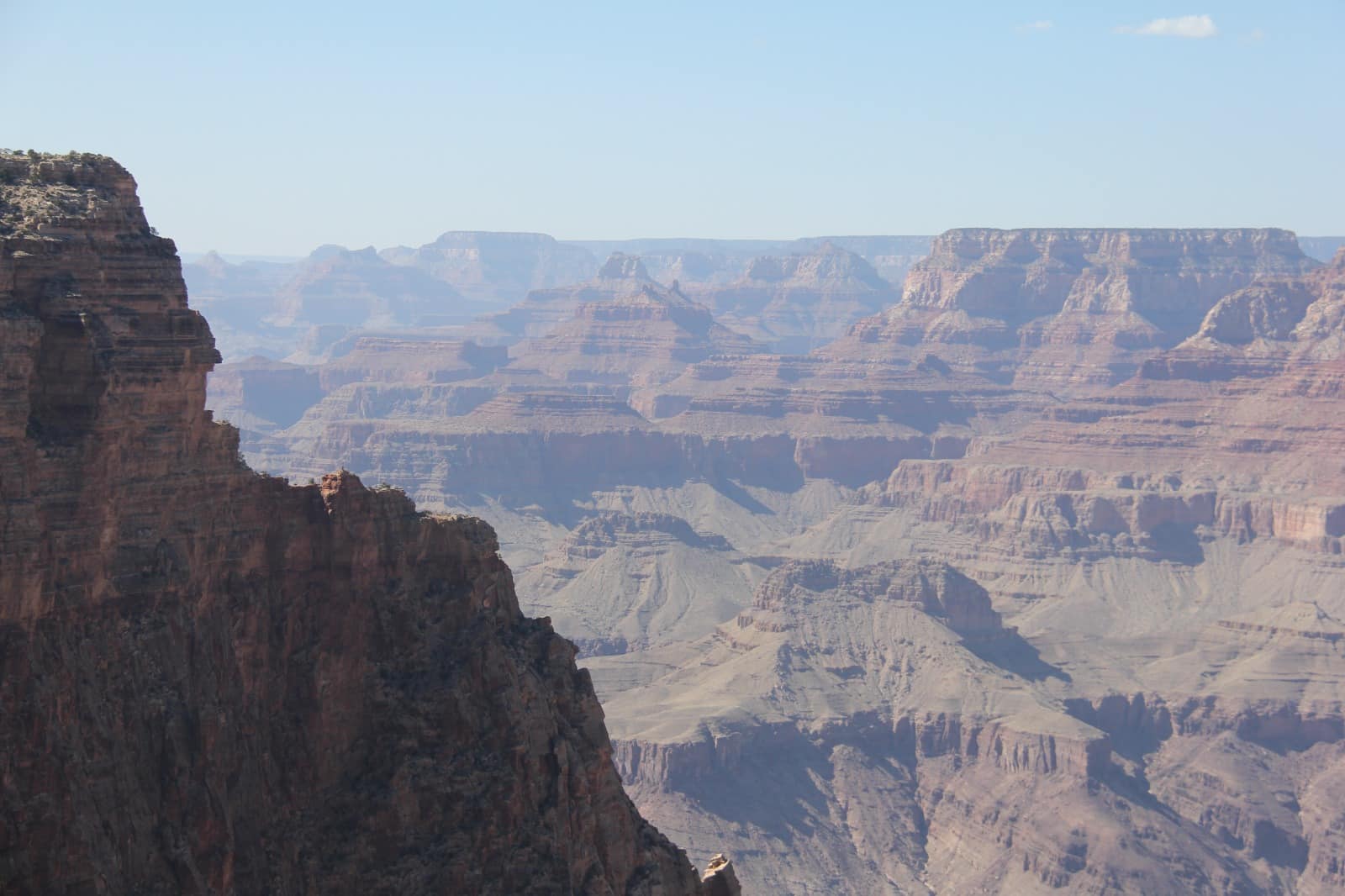Abundant and varied.
Explore More in Grand Canyon National Park
Wildlife in Grand Canyon National Park
A variety of animals
Wildlife in Grand Canyon National Park is abundant and varied. From large mammals like elk, bighorn sheep, and mule deer to small creatures such as skunks, bats, lizards, and more than 60 species of birds, the park's wildlife has adapted to the harsh environment over millions of years. Visitors to Grand Canyon National Park can expect to see a variety of animals, from wide-eyed squirrels and chipmunks scurrying along the trails to majestic elk grazing on the grassy meadows.
Canyon Wren
The canyon wren is a small grayish-brown bird found throughout Grand Canyon National Park. It is easily identified by its loud, melodious song, heard during the day from rocky ledges and canyon walls. Despite its name, the canyon wren can also be found in lowland woodlands. This species feeds on insects and other invertebrates which it finds in rocky crevices or by digging through leaf litter on the ground. They build their nests in cavities, usually rock crevices, and are highly territorial.
Belted Kingfisher
The belted kingfisher is a large, colorful bird found along the Colorado River in Grand Canyon National Park. This species feeds on small fish and other aquatic creatures which it catches by diving from high perches. It has a loud, raspy call that can be heard echoing through the canyon walls. The males are identified by their white chest and blue-gray back, while the females have a brownish chest and gray backs.

Bison
The largest land mammal in the United States, bison are also found at Grand Canyon National Park. After nearly being hunted to extinction in the late 1800s, herds of bison have been reintroduced into remote areas of the park and can be seen grazing on grasslands near the canyon's rim. Bison are powerful animals with shaggy brown fur and horns that can reach up to two feet in length.
Javelina
Javelina, also known as a collared peccary or musk hog, are often called reds when young due to their fur color at that stage. Although they share some similarities with pigs, javelinas are actually a separate species of hoofed mammals. These animals trace their lineage back to ancestors who migrated from Asia to Central and South America, crossing over the Bering land bridge. Keep an eye out for javelinas on the South Rim of Grand Canyon National Park.
Gila Monster
The Gila Monster is a large reptile native to the desert regions of the southwestern United States. This species makes its home in Grand Canyon National Park, where it can be spotted during the hottest months of summer, sunning itself on rocks near water sources. These animals are easily identified by their bright orange and black scales and thick, stubby tail. The Gila Monster is a venomous species, capable of inflicting serious injury or even death with its bite. Despite this, they are generally docile and will not attack unless provoked.'
Gopher Snake
The gopher snake is a common species of reptile found in the Grand Canyon. These snakes are identified by their thick body, dark brown scales, and light yellow belly. They grow to an average length of four to five feet and feed on small rodents, lizards, birds, eggs, insects, and other small creatures that they find in the park's rugged landscape. The gopher snake is non-venomous, and its primary defense against predators is to coil up in a tight ball and puff up its body to scare away potential threats. This species can often be seen basking in the sun on rocky ledges or roadsides within the park.
Canyon Tree Frog
The canyon tree frog is a small amphibian found in Grand Canyon National Park and other areas of the southwestern United States. This species can often be heard calling from its hiding places during the warmer months of the year. It has bright green skin, brown eyes, and orange patches on its legs. The canyon tree frog feeds mainly on insects, but it may also eat small lizards or other amphibians. This species is highly venomous, so it's important to be careful when handling these frogs. They are an important part of the canyon's ecosystem, and they help keep insect populations in check.
Tiger Salamander
The tiger salamander is the largest species of amphibian in the United States, and it can be found living in Grand Canyon National Park. These animals have an olive-brown or black body with orange to yellow stripes running along its back. They are carnivorous and feed mainly on small insects and worms which they find near streams or other bodies of water. The tiger salamander is a shy creature, but it can be seen occasionally out in the open during the warmer months of the year. They are an important part of the park's wildlife and they help to keep pest populations in check.
Anasazi
Anasazi
Learn More
Antelope Island
Antelope Island
Learn More
Antelope Canyon
Antelope Canyon
Learn More
Bear Lake
Bear Lake
Learn More
Camp Floyd
Camp Floyd
Learn More
Coral Pink Sand Dunes
Coral Pink Sand Dunes
Learn More
Dead Horse Point
Dead Horse Point
Learn More
Deer Creek
Dear Creek
Learn More
East Canyon
East Canyon
Learn More
Echo
Echo
Learn More
Edge of the Cedars
Edge of the Cedars
Learn More
Escalante Petrified Forest
Escalante Petrified Forest
Learn More
Flight Park
Flight Park
Learn More
Freemont Indian
Freemont Indian
Learn More
Frontier Homestead
Frontier Homstead
Learn More
Goblin Valley
Goblin Valley
Learn More
Goosenecks
Goosenecks
Learn More
The Great Salt Lake
The Great Salt Lake
Learn More
Green River
Green River
Learn More
Gunlock
Gunlock
Learn More
Historic Union Pacific Rail Trail
Historic Union Pacific Rail Trail
Learn More
Huntington
Huntington
Learn More
Hyrum
Hyrum
Learn More
Jordan River Off-Highway Vehicle
Jordan River Off-Highway Vehicle
Learn More
Jordanelle
Jordanelle
Learn More
Kodachrome Basin
Kodachrome Basin
Learn More
Snow Canyon
Snow Canyon
Learn More
Yuba
Yuba
Learn More
